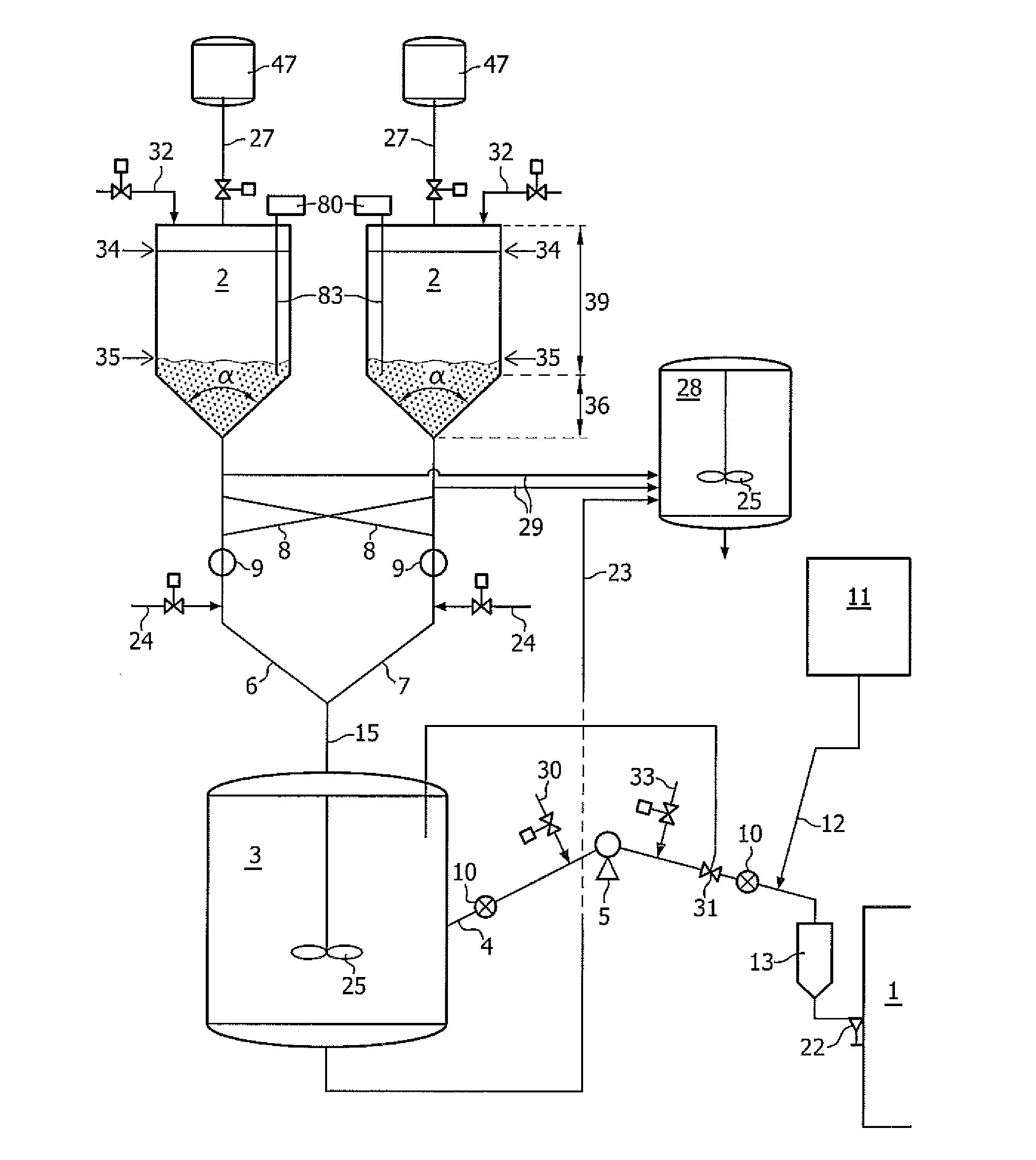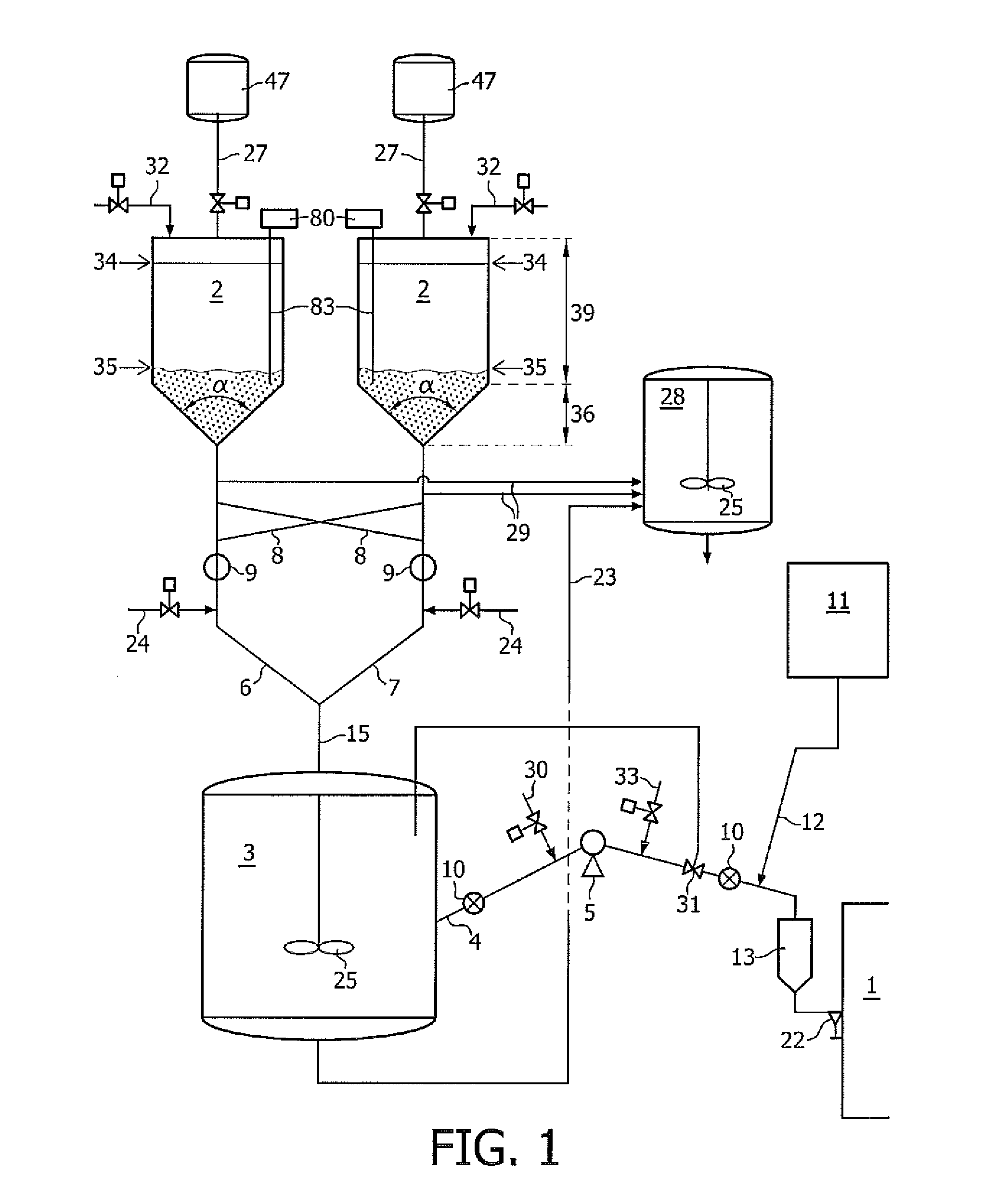Method for replacing compatible ethylene polymerization catalysts
a technology of polymerization catalyst and compatible ethylene, which is applied in the direction of chemical/physical/physical-chemical processes, chemical apparatus and processes, chemical/physical processes, etc., can solve the problems of time-consuming and costly catalyst changes, and achieve the effect of reducing the amount of transition product produced and being easy to achiev
- Summary
- Abstract
- Description
- Claims
- Application Information
AI Technical Summary
Benefits of technology
Problems solved by technology
Method used
Image
Examples
example 1
[0098]This example describes the transition from a first metallocene catalyst to a second metallocene catalyst in the polymerization of ethylene. These metallocene catalysts are compatible.
[0099]A first mud pot capable of holding 300 kg of catalyst was loaded with a first metallocene catalyst. Commercially available catalyst was used. The catalyst was fed to a mixing vessel in form of a slurry. The slurry was prepared by mixing the metallocene catalyst from the mud pot with a first diluent, in particular isobutane. A polymerization was performed in a double loop ethylene polymerization reactor. The polymerization reaction ran using metallocene catalyst for a period of 1 day. The feed of ethylene to the polymerization reactors was lowered in order to reduce the ethylene concentration in the reactors by 20%, prior to the introduction of a second metallocene catalyst. The catalyst concentration in the mixing vessel was adjusted by increasing the isobutane feed to the maximum value of 1...
example 2
[0100]The hereunder-described device, illustrated by FIG. 1, corresponds to equipment suitable for carrying out the method of the invention. Example 2 will illustrate the use of a method of the invention for the sequential feeding of at least two compatible ethylene polymerization catalysts in an ethylene polymerisation reactor plant.
[0101]A metallocene catalyst is solid and is generally provided under a dry form in commercially available packaging. Depending on the diluent used, it may be required to bring the catalyst under higher pressure conditions than present in the packaging they are supplied in. This is for instance the case when isobutane is used, since this diluent is only liquid at higher pressure levels. In case for instance hexane is used as diluent, pressurization is not required, since this diluent is liquid at low pressures. Preferably pressurizeable containers are used. Pressurizeable containers 47 may be suitable for direct use and coupling to an inlet provided on ...
PUM
| Property | Measurement | Unit |
|---|---|---|
| Fraction | aaaaa | aaaaa |
| Fraction | aaaaa | aaaaa |
| Fraction | aaaaa | aaaaa |
Abstract
Description
Claims
Application Information
 Login to View More
Login to View More - R&D
- Intellectual Property
- Life Sciences
- Materials
- Tech Scout
- Unparalleled Data Quality
- Higher Quality Content
- 60% Fewer Hallucinations
Browse by: Latest US Patents, China's latest patents, Technical Efficacy Thesaurus, Application Domain, Technology Topic, Popular Technical Reports.
© 2025 PatSnap. All rights reserved.Legal|Privacy policy|Modern Slavery Act Transparency Statement|Sitemap|About US| Contact US: help@patsnap.com


